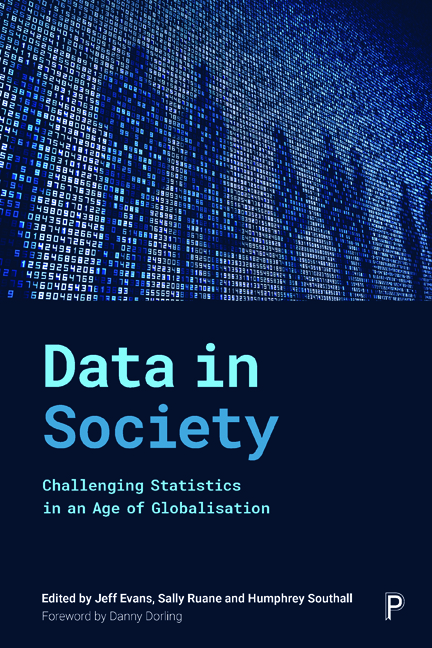Book contents
- Frontmatter
- Contents
- List of figures, tables and boxes
- Notes on contributors
- Foreword
- Preface
- General introduction
- Part I How data are changing
- Part II Counting in a globalised world
- Part III Statistics and the changing role of the state
- Part IV Economic life
- Part V Inequalities in health and wellbeing
- Part VI Advancing social progress through critical statistical literacy
- Epilogue: progressive ways ahead
- Index
20 - Measuring social wellbeing
Published online by Cambridge University Press: 30 April 2022
- Frontmatter
- Contents
- List of figures, tables and boxes
- Notes on contributors
- Foreword
- Preface
- General introduction
- Part I How data are changing
- Part II Counting in a globalised world
- Part III Statistics and the changing role of the state
- Part IV Economic life
- Part V Inequalities in health and wellbeing
- Part VI Advancing social progress through critical statistical literacy
- Epilogue: progressive ways ahead
- Index
Summary
Introduction
Wellbeing has been conceptualised in several ways. Most have argued that wellbeing should be conceived in terms of people's satisfaction with their life, or perhaps ‘happiness’, which will of course vary with their capacities and expectations. Others argue that wellbeing is feeling secure about the future. Economists have, mostly unsuccessfully, tried to argue that the fundamental concept is (economic) welfare. However wellbeing is conceptualised, measurement matters so that governments can know how people are feeling: for example, do communities and individuals feel safe in their homes?
Some argue for a single consistent approach to valuation. Thus, conventional economists use Gross National Product (GNP) and Gross Domestic Product (GDP). However many argue that because GNP and GDP are both just measures of economic activity and not of welfare, we should find ways of valuing non-monetarised components. They propose using stated preference ‘willingness to pay’ techniques (Competition Commission, 2010). This can entail including nonmarketed production and other ‘goods’ such as leisure; making deductions for production which does not contribute to welfare or imposes social or environmental costs; reclassifying items between consumption and investment, or between intermediate and final production; and so on. These types of adjustment all have problems, for example, because they do not and cannot easily take into account income distribution (Carr-Hill and Lintott, 2002). Similarly, while there has been interesting work carried out using time as the basis for valuation (Gershuny, 2011) the basic problem is forcing the assessment of welfare into one dimension.
Instead, many argue that we should move completely away from the framework of national accounts. There are three main approaches, explored overleaf. The first is the postulate that there is a minimum set of basic needs which should be satisfied for everyone, which are, unfortunately, usually aggregated into an index. The second is the investigation into people's quality of life through surveys, whether ‘objectively’ measured (for example, proportions of households without basic amenities) or self-reported (for example, happiness or satisfaction). The third is the eclectic compilation of administrative and survey data according to a list of ‘concerns’.
- Type
- Chapter
- Information
- Data in SocietyChallenging Statistics in an Age of Globalisation, pp. 265 - 276Publisher: Bristol University PressPrint publication year: 2019



